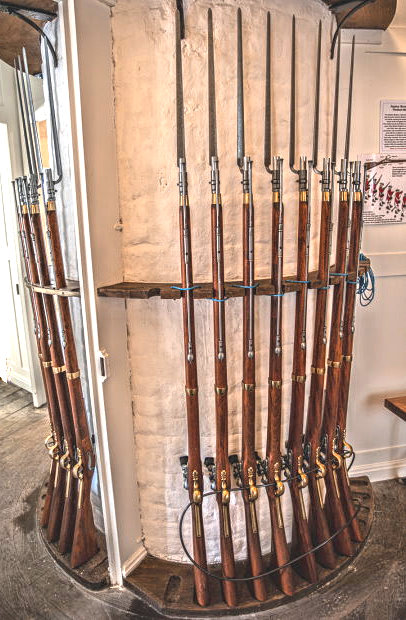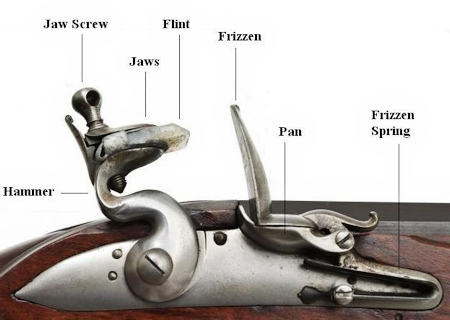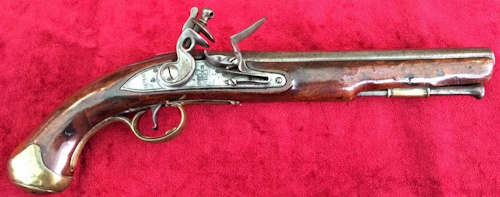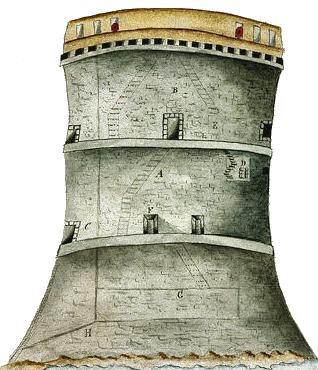The Musket

The musket and its derivatives were the standard long guns of the British Empire's land forces from 1722 until 1838, when they were superseded by a percussion cap smoothbore musket.

India Pattern 'Brown Bess' Musket
During the 18th and early 19th centuries, the weapon of choice was the Brown Bess musket which had been used by the army since the 1730s. The pike had been replaced by the use of the musket in the early 18th century.
There were many different patterns of musket fired during the 18th century, but the weapon normally favoured a flintlock mechanism which was more reliable than the preceding matchlock system used during the English Civil War in the 17th century.
Bayonets were used in conjunction with the musket for close range fighting – the bayonet was fitted into the socket the musket barrel, allowing it to be fired while the bayonet was fixed (unlike earlier screw or plug bayonets) and effectively turned the musket into a pike-like instrument.
A well-trained soldier could fire up to three rounds per minute, soldiers completely off target or too slow at priming and loading would often be lightly punished. The use of the platoon formation by the British army meant that a constant volley of fire could be employed. There was much that could go wrong with the musket – from misfires in wet weather, to the gun firing at random due to sparks which set the powder off.[ In the heat of battle, a soldier may forget to remove the ramrod from the barrel before firing.

Muskets in their rack in Martello Tower No.24
The Brown Bess was a flintlock musket. Unlike matchlocks, which were fired by way of a slow-burning twin fuse igniting the powder when the trigger was pulled, flintlocks featured a piece of shaped (“knapped”) flint that was held in a spring-loaded vice-like mechanism. When the trigger was pulled, the flint this was brought down against a steel striker. This produced a shower of sparks, which ignited the priming powder. Ignition then proceeded through a touchhole in the side of the breech and would set off the main charge.
Though primitive by today’s standards, it is difficult to overstate how much of an improvement this system was over the earlier matchlocks. Flintlocks like the Brown Bess were much more reliable, especially in poor weather conditions, and cheaper to produce than other muskets. These advantages made the technology the dominant form of ignition in less than a century.

Flintlock Mechanism
The accuracy of the Brown Bess was fair, as with most other muskets. The maximum effective range (lethal range) is often quoted as 175 yards (160 m) which was fairly good, but the Brown Bess was often fired en masse at fifty yards to inflict the greatest damage upon the enemy. Note that "effective range" does not mean the range at which a weapon is able to hit a target, it means the range at which the projectile retains a large amount of killing power.
The musket proved to be an overall reliable weapon which's performance, especially when used en masse, should not be underestimated. Even though contemporary writers often state that a musket's effective range when firing at an individual target did not go beyond 30 paces, modern test firings at individual human-sized targets suggest that a musket's effective range lies somewhere between 70 and 100 yards. The Long Land Pattern musket and its derivatives, all .75 calibre flintlock muskets, were the standard long guns of the British Empire's land forces from 1722 until 1838, when they were superseded by a percussion cap smoothbore musket.
There were many variants of the Brown Bess produced, and the one most likely to have been issued to soldiers manning the Martello Towers in Britain was the India Pattern type.

Training Day at Hythe, Kent - Antique Print 1888
By the time of the Napoleonic Wars, Britain’s Brown Bess musket had delivered nearly a century of service. The tactics of the time were for musket troops to fire as many volleys as possible into an advancing enemy formation. The 10.5-pound Brown Bess could propel a one-ounce lead shot to a maximum effective range of 175 yards.
Since the weapon was virtually impossible to aim with any degree of accuracy at such distances, most engagements took place at the range of 50 yards or less. Still, an experienced shooter could unload three shots a minute.

Officers at the time of Napoleonic campaigns of the late 18th-early 19th century would have been armed with a British Flintlock Officer's Pistol of standard military calibre .69. It had an overall length of 15.5 inches.
These pistols were well regarded as being very reliable by serving British officers at the time.

Flintlock Officer's Pistol
The British Army standardized the sword carried by Infantry officers with a specific pattern. The sword had "a brass guard, pommel and shell, gilt with gold; with grip or handle, of silver twisted wire. The blade to be straight and made to cut and thrust; to be one inch at least broad at the shoulder and 32 inches in length."
This sword was quickly adopted and was universal amongst line infantry officers by 1800. Even though regulations stated the size of the blade, there were numerous deviations. Some blades of surviving originals have an almost rapier type blade.

Infantry Officer's Sword c1800









 Red Dragon I.T. Ltd.
Red Dragon I.T. Ltd.